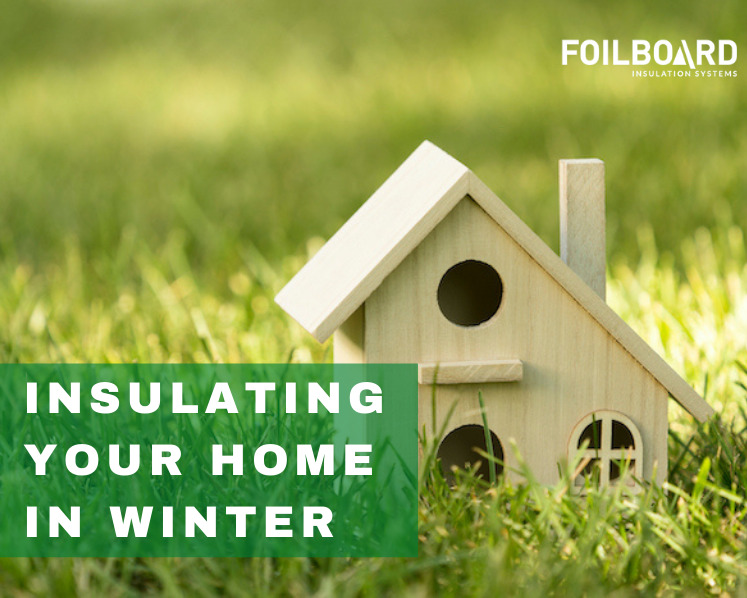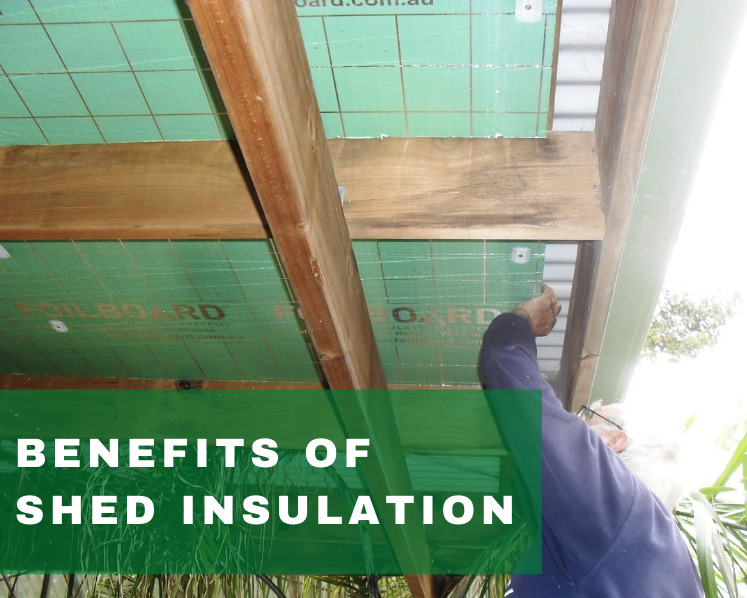
Regardless of where you are living, most cities in the world have to contend with varying and sometimes extreme weather conditions, with Melbourne being no exception! With a reputation for hosting four different seasons in one day, regardless of what time of the year it is, our city is known for having some crazy cold days in summer, and even some pleasant ones in winter—not to mention that our summers are extending well into the winter calendar, and vice versa.
When weather conditions become increasingly volatile and swing from one extreme to another, what is the best way to keep up comfortable temperatures in your home and even your workplace? While using air conditioners and heaters guarantees a rapid readjustment of your internal climate, it comes at a cost. Artificial air is not as healthy for you as natural air, and electricity bills can quickly stack up when these devices are run all day.
The best and most organic solution for creating a balanced climate at home is in fact insulation. When you fit your home or office with insulation, you are ensuring the best protection against unpredictable weather conditions, along with a whole host of other advantages for you and your home. This leaves the question: What is the best insulation for you? To help with this, today we have put together a short guide that will give you more clarity on the right insulation solution for you. By the time you are finished reading, you will have a much better idea regarding what best suits your needs, and you may even be ready to get rolling with installing insulation!
Why Insulation? Benefits
When it comes to choosing insulation, there are a number of great reasons to do so. The most obvious benefit of having a well insulated property is increased thermal efficiency. In essence, thermal efficiency is a measure of your home’s ability to maintain a desirable temperature internally. In order to make any space more efficient at this job, it is crucial that insulation is fitted. With good high quality insulation, you have the best chance of maintaining the kind of climate you want in your home, regardless of what time of the year it is.
Naturally, once you insulate your home, you will exponentially minimise the need to run your air conditioners and heaters as much as you previously did. As one would expect, this will help you to keep more money in your pocket and less going towards your gas and electricity bills. Once you make your initial outlay for insulation, it is predominantly recouped via these significant savings.
Another incredible benefit derived from reducing how much you run your appliances is the contribution to the environment that naturally occurs as a result. By really limiting your use of these appliances, you cease to take excessive amounts of natural resources from the earth, in turn reducing your carbon footprint and helping to create a better planet.
If you decide to insulate during the stages of building a home, you will also find that the construction phase benefits from a speedier build. This is because, as insulation covers the interior of a building under construction, internal works can proceed uninterrupted, regardless of whether or not bricking or cladwork has been completed.
One more fantastic advantage of insulation is that it provides your building with some level of sound dampening. This means more quiet inside, as this extra layer of insulation material acts to further prevent sound from your home being heard outside, and external sounds from being heard inside your home.
To offer some more specific perspective on what insulation can do for you, in Victoria, over 50% of a household energy budget can be spent on heating and cooling a home. As discussed previously, this can be cut down significantly with insulation. Homes that do not have insulation, stand to lose up to 35% of their heat through the roof in winter and gain around the same amount of heat during summer. Through the windows, heat loss is around 10-20% in winter and heat gain can reach 35% in summer. The walls of a home gain and lose heat at up to 25%, while heat loss through the floor can be as high as 20%.
Understanding R Values
Before we dive into the different types on insulation to choose from, it’s important to understand R values. Essentially, R value is a way of measuring your insulation’s ability to resist heat flow. You will notice that R values range 1.5 to 7, and the higher the R value of an insulation, the more effective it is at insulating your property. When discussing R values, there are three that you need to know about:
-
‘Up’ R-Value
This provides a measure of the insulation’s resistance to heat flow out of a building. Another name for this is the winter R value, as it is desirable to have a high up R value in winter, in order to keep precious heat in your home.
-
‘Down’ R Value
This provides a measure of the insulation’s resistance to heat flow into a building. Another name for this is the summer R value, as it is desirable to have a high down R value in summer to keep your home cool by leaving the heat out.
-
Total R Value
The total R value is the up and down R value combined. Whenever you hear the term R value, it is usually referring to this.
When selecting the appropriate R value for your home, it won’t always benefit you to select the highest. This is because different build styles of homes, and different environments, call for different levels of heat resistance. One home may require insulation rated with an R value of 7, while another can have the same level or protection at an R value of 4. To find out what’s right for you, it’s best to have somebody assess your home.
Different Types of Insulation
There are a few key types of insulation that are commonly utilised in Australia today. These are reflective insulation, bulk insulation and (to a lesser degree) spray foam insulation.
-
Reflective Insulation
Reflective insulation is an extremely effective and cost efficient insulation that is commonly used in homes across Australia today. Reflective insulation is essentially created out of an aluminium-foil-like material and it works by deflecting radiant heat away from a home when it tries to enter. Most effective in warmer climates (though also good in cooler ones), reflective insulation can be fitted within walls, in the roof/ceiling area and under the floor.
-
Bulk Insulation
The most common form of insulation available to purchase from insulation specialists and hardware stores, bulk insulation works by trapping air inside millions of tiny bubbles, as a way to prevent the flow of heat from entering your property. It is available in rolls, boards and batts and produced from a range of different materials. You will see it mostly made from glass wool, natural wool, polyester, cellulose fibre and recycled paper. Bulk and reflective insulation can be installed together to create a hybrid configuration to maximise effectiveness.
-
Spray Insulation
A relatively recent development in the world of insulation, spray foam insulation is really quite effective and serves a great purpose that no other insulation truly can. You apply this insulation by spraying a solution in the floor, walls or ceiling, causing a bubble up into a thick layer of insulation. The R value is higher than most traditional forms of insulation and it also resists moisture, which means it won’t sag as quickly as bulk insulation. The one thing about spray insulation that may make you reconsider whether to go for it or not is that it costs more than traditional insulation and is also more flammable. A good use for spray insulation is in hard to reach places that are difficult to fully protect with traditional insulation. Spray insulation too can be joined with reflective and batts to form a hybrid.
Where Can You Install Insulation?
When it comes to installing insulation, it is done in three key areas of your property.
-
Underfloor Insulation Installation
A surprising amount of air can escape through your floors, so it’s pretty important to have it insulated correctly. A well insulated underfloor greatly contributes to the thermal efficiency of your home.
-
Wall Insulation Installation
Almost all new homes are insulated in the walls today. Insulating your walls helps to contribute to a more balance internal climate all year round.
-
Ceiling Insulation Installation
Heat tends to rise and escape through your ceiling. Thankfully, in winter, ceiling insulation prevents this. In summer, reflective insulation is great in your ceiling to reflect out any of the sun’s rays trying to penetrate your home from above.
Choosing the Best Insulation for Your Home
Choosing the best insulation for your house can seem confusing. There are many different products designed for varying applications. They all have one thing in common, R Value, which is the measurement of thermal efficiency. In a new build or renovation, the National Construction Code details deemed to satisfy requirements outline the R Value required. This is determined by which climate your project is in. Choosing the best insulation will depend on the thermal resistance required and the application. Some insulations are designed to perform in damp conditions as a moisture barrier and some materials are unsuitable. Whether the insulation requirement is for walls, ceilings or underfloor there are insulation products available. Make sure the insulation you choose is suitable for the application by checking thermal resistance required and the conditions the insulation will be subjected to.
Insulation for New Home Construction
Insulating the ceiling, walls and underfloor of a new home is a standard requirement to achieve the regulated energy efficiency requirements. Insulating the property’s envelope will help improve the thermal and energy efficiency of the property. We stock all types of rigid insulation panels to suit your property’s design and construction and to achieve the thermal efficiency rating that is required or is desired. With new home construction, our rigid insulation panels can be easily installed to underfloor, walls or ceilings. Our insulation panels combine an insulating core with a radiant barrier that can also act as a thermal break to meet any insulation requirement.
Conclusion:
All in all, when selecting the perfect insulation for you, it comes down to a variety of factors, including your home type, climate and budget. With all the information you’ve learnt today, you should be able to make a much more informed decision regarding insulation. If you are still unsure of what you need, contact us today on 1800 354 717.
What type of insulation will you be going with? Is there any information you’d like to add? Let us know by leaving a comment below.
FAQs
Question: Is a higher R value better for insulation?
Answer: Yes, the higher the R value the better the insulation. A higher R value indicates that the insulation product better resists the transfer of heat.
Question: What is the best insulation for exterior walls?
Answer: The best type of insulation for exterior walls is one that acts as a thermal break, acts as a radiant barrier and has an insulated core. This will increase performance by resisting radiant heat, convection and conduction heat transfer.
Question: Does doubling the insulation increase the R value?
Answer: The R value is dependent on the material thermal resistance but also thickness. If you double the insulation thickness of the same material the R value is doubled.
Question: Are all R values the same?
Answer: To add to the confusion of insulation values, both the imperial system and metric system use the same symbol, R. The USA use imperial units of Fahrenheit, square feet and BTU. The metric value uses Celsius, square metres and Watts. Websites in America will show R values that are approximately 5.68 times as large as the same value in metric. E.g. R2 in metric is equal to R11.3 in imperial.
Question: Should I insulate under my floor?
Answer: Yes. Any part of the houses envelope that is not insulated will be less resistant to heat transfer. A retrofit install to a timber floor will make a large improvement on the energy efficiency of the house. Any floors with in-slab heating are required to have insulation and it is becoming more common to insulate concrete slabs by putting insulation into the slab.
Question: What is the minimum thickness for floor insulation?
Answer: It is not so much the thickness that is important, but the thermal resistance. Different materials have different R values at the same thickness.
Question: How thick should concrete floor insulation be?
Answer: Building regulations and energy design need to be considered, but again thickness is not as important as R value.







What are foilboards R values??
Please check the R values here: https://www.foilboard.com.au/foil-insulation/